Hot spots on dogs are remarkably common during the sunnier and warmer months of the year.
Don’t allow hot spots to ruin your summertime, with the proper treatment, your dog will feel more comfortable in a matter of days.
What Are Hot Spots?
A hot spot, also known as moist dermatitis, is a condition in dogs that involves an area of skin that becomes inflamed or infected, which is quite annoying and uncomfortable for your dog.
Your dog will probably chew and scratch the infected area for relief, but doing so makes these hot spots more harmful.
Hot spots are often set off by your dog scratching, licking, gnawing, and chewing on the infected area.
The early stages of formation involve the skin becoming moist, itchy, and red.
The advanced stage involves a full-blown infection with pus oozing out of the wounded area.
If your dog continuously develops hot spots, it might be a sign of an underlying disease; if that’s the case, you should visit your vet.
Best Hot Spots Treatments
Best Overall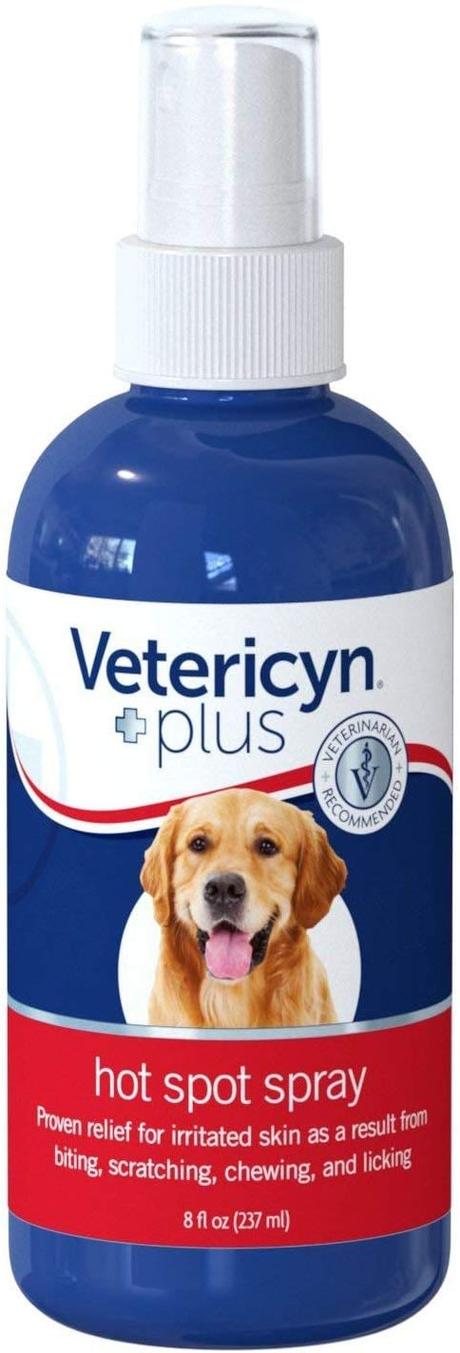
Vetericyn Hot Spot Spray
- All Animal Hot Spot Spray.
- Pain-free Solution.
- Recommended By Veterinarians.
- Innovative, Reliable Animal Healthcare Product.
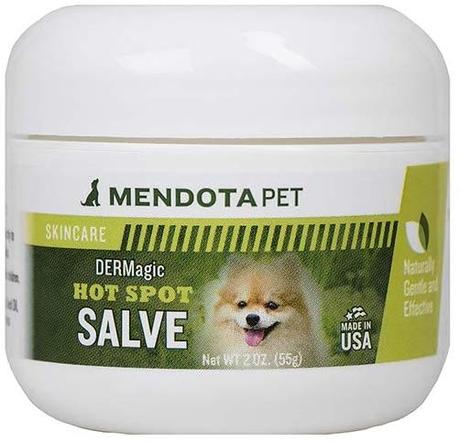
DERMagic Hot Spot Salve
- All natural and steroid-free.
- Speeds relief and healing
- Kills yeast and bacteria and fungus.
- Stops itching and chewing.
- Made in USA.

Vet’s Best Dog Hot Spot Itch Relief Spray
- Veterinarian Formulated And Recommended.
- No-sting Formula – Alcohol-free.
- Plant-based Ingredients.
- Guaranteed Effective.
- Immediate Relief
Causes of Hot Spots
Hot spots are usually triggered by scratching and licking the affected area, which leads to skin inflammation and secondary bacterial infections.
Unfortunately, this unceasing scratching only makes the area itchier, which causes a self-perpetuating cycle of skin itching. Therefore, any condition that makes your dog’s skin itchy may lead to a hot spot.
Other reasons for hot spots on dogs may be:
- Parasites
- Flea bites.
- Food allergies
- Stress or boredom
- Ear infections
- Poor hygiene and grooming
- Ear infections
Most of these maladies are chronic problems that can lead to recurring hot spots if they are not adequately controlled.
Recognizing and addressing the underlying reason for your dog’s hot spot is the most critical part of preventing skin problems in the future.
Dogs that are often wet from bathing, swimming, or wintry weather are more likely to develop hot spots due to the moisture kept into their coats.
Symptoms of Hot Spots on Dogs:
Signs your dog may have a hot spot include:
- Swelling
- Inflammation and redness in a contained area.
- Dry and scaly skin.
- Crusted or oozing sores.
- Skin patches that are painful to touch.
- Constant gnawing and licking a specific spot.
- Loss of hair on the particular spot.
- A foul odor coming from the infected area.
- Your dog appears depressed or unusually aggressive.
How to Treat Hot Spots on Dogs:
1. Cut the hair around the hot spot.
Prudently cut the hair around the hot spot using clippers or scissors.
Your dog may get scared as you trim throughout the infected area, so have another person to sustain and comfort your pup while you cut.
Seek professional guidance if you need aid to remove the hair harmlessly.
2. Clean the infected area
Cleanse the affected area using a product that contains an adequate amount of PH, this way you won’t cause any pain or distress for your dog.
For better results, use a product that is formulated to treat hot spots on dogs.
3. Soothing
After cleaning the affected area, use a soft washcloth to soothe the area and reduce irritation, before gently drying the hot spot.
4. Treating the hot spot.
After it becomes dry, use a topical hot spot treatment to sooth and protect the infected area.
Apply this treatment four times daily and observe how frequently your dog scratch or lick the affected area.
You may need to use a dog cone or an e-collar if your pup’s excessive licking remains
5. Maintain the treatment
It usually takes a few days to treat dog hot spots.
Cleaning the affected area must but be maintained continuously until the hot spot is completely treated.
Please contact your veterinarian if you notice that the infected area has worsened.
Home remedies for hot spots on dogs
1. Apple cider vinegar.
Apple cider vinegar has antibacterial and antifungal properties; it kills the bacteria present on the skin, improves the skin’s pH levels, and soothes the skin when applied topically.
This will prevent your dog from going back to chewing or scratching at the hot spot and worsening the wound promoting faster healing.
Apple cider vinegar is also helpful in getting rid of fleas on your furry little friend.
Caution: apple cider vinegar should not be used if your dog has an open wound, the acetic acid present in apple cider vinegar will cause a burning sensation, which will irritate the wound and be very painful for your pooch.
- Pour 1/2 cup each of apple cider vinegar and water into a spray bottle.
- Shake it to blend the ingredients.
- Spray the solution directly onto your dog’s infected area.
Alternatively, you can spray the solution on a cotton ball and gently rub the hot spot, apply this 2 to 4 times a day, or as needed for one week.
You can also give your dog apple cider vinegar orally, mix the specified quantity, and with your dog’s wet food.
- One teaspoon for dogs weighing less than 25 pounds.
- Two teaspoons for dogs weighing between 25 and 50 pounds.
- One tablespoon for dogs weighing between 50 and 75 pounds.
- One and a half to two tablespoons for dogs weighing more than 75 pounds.
Add it to your dog’s food once a day for one week or until your dog stops itching and licking the hot spot.
Best Overall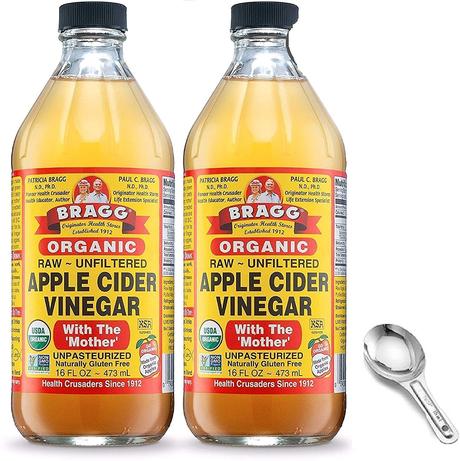
Bragg USDA Organic Raw Apple Cider Vinegar
Buy2. Black Tea
Black tea contains tannic acid, which can draw out bacteria and soothe the sore; it also dries out the infected area and promotes gentle healing.
dip a tea bag in a cup of hot water and allow it to cool, remove the tea bag and place it directly on the hot spot in dogs, let it sit for a few minutes, do this several times a day for one week.
3. Aloe Vera Gel
Aloe Vera is known to have anti-inflammatory properties and is used as an antibiotic and a disinfectant, it soothes any skin irritation and promotes quick healing.
Extract fresh aloe Vera gel by cutting open an Aloe Vera leaf.
You can also use a store-bought 100% pure Aloe Vera gel.
Apply a thin layer of the gel directly on the hot spot.
Best Overall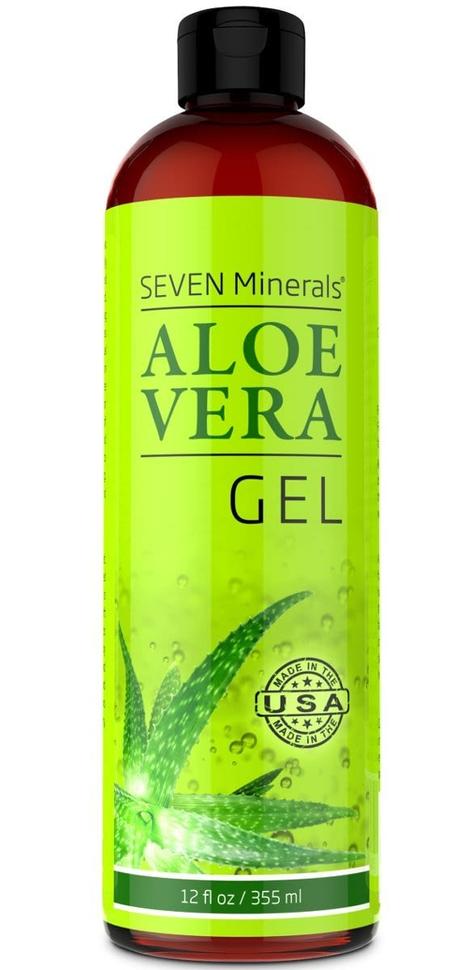
Organic Aloe Vera Gel with 100% Pure Aloe From Freshly Cut Aloe Plant
Buy4. Organic Raw Honey
The best type of honey to use to treat any wound in dogs is Manuka honey.
Honey is naturally high in enzymes, antioxidants, and flavonoids, when used as a wound dressing, honey eliminates bacterial infections and decreases inflammation, swelling, and pain.
Trim the hair around the hot spot and blot it gently to remove any dirt.
Apply a thin layer of honey directly on the wound using a clean spatula.
Do this twice a day daily until the hot spot is completely healed.
Best Overall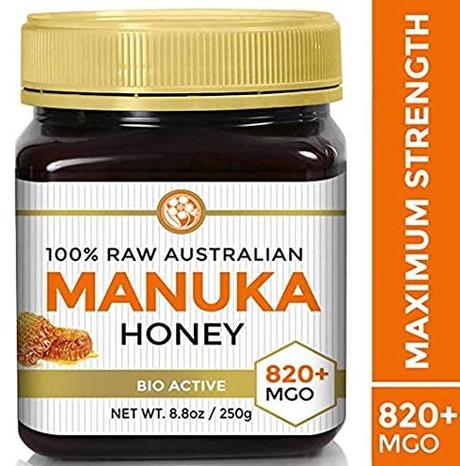
Raw Manuka Honey Certified MGO 820+
Buy5. Colloidal Silver
Colloidal silver is an all-natural pure substance that contains microscopic clusters of silver, in pure ionized water held in suspension by a tiny electric charge laid on each particle; it is used to treat bacterial, parasitic, and viral infections.
Drop a little bit of colloidal silver onto a cotton ball, and gently dab it on the hot spot.
Repeat several times a day for one week to relieve your pooch off their misery.
Best Overall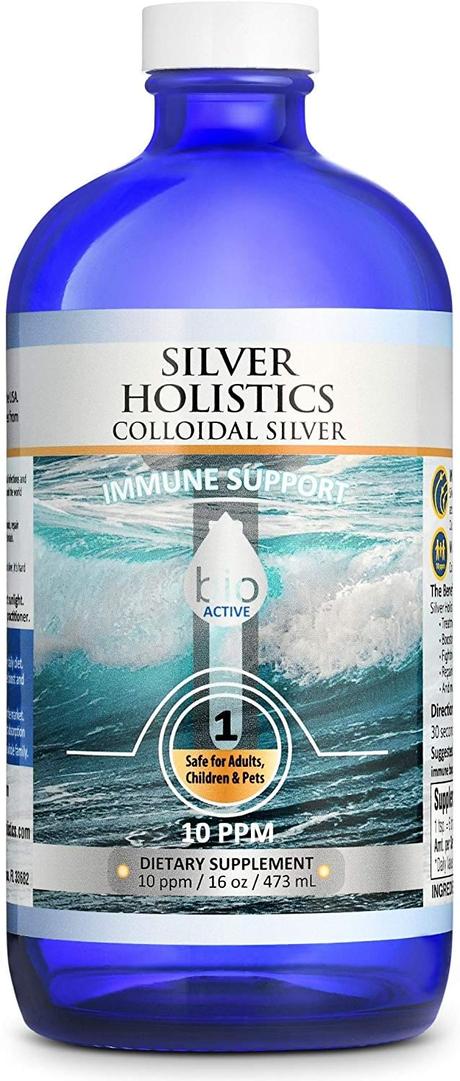
Silver Holistics | Colloidal Silver Liquid |
Buy6. Tea Tree Oil
Tea tree oil has antifungal, antibacterial, and anti-inflammatory properties; it helps calm the irritation and itching on the wound and promotes quick healing.
Things you’ll need:
- Tea tree oil (5 drops ).
- Distilled water (1/2 cup ).
- Liquid dishwashing detergent (few drops ).
Pour 1/2 cup of distilled water into a spray bottle, add five drops of tea tree oil and a few drops of liquid dish soap.
Shake the bottle, so the ingredients get mixed well, and spray the solution directly on the wound.
Apply this remedy several times a day.
Best Overall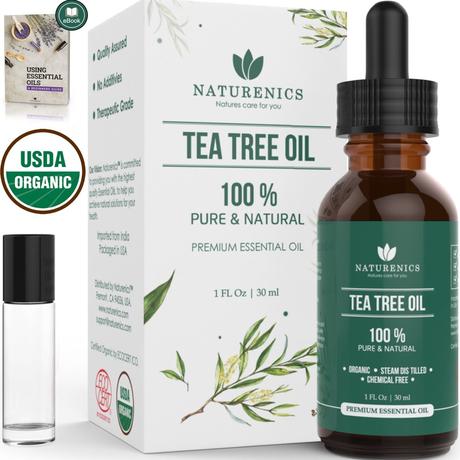
Naturenics Premium 100% Organic Tea Tree Essential Oil
Buy7. Coconut Oil
Coconut oil is one of the best home remedies for hot spots on dogs, as it is antifungal and antibacterial; it can be used for topical applications as well as internal consumption.
Apply coconut oil on the wound, use a cotton ball or swab to gently rub some coconut oil on the dog’s hot spot, do this several times a day.
Caution: Ensure that your dog doesn’t lick the oil, ingesting too much coconut oil can act as a laxative and cause diarrhea.
You can also use a specified amount of coconut oil as a supplement in your pooch’s diet, always start slow, add 1/4 teaspoon per 10 pounds, and one tablespoon for 30 pounds of your dog’s weight.
(Read: Can dogs eat coconut oil?)
Best Overall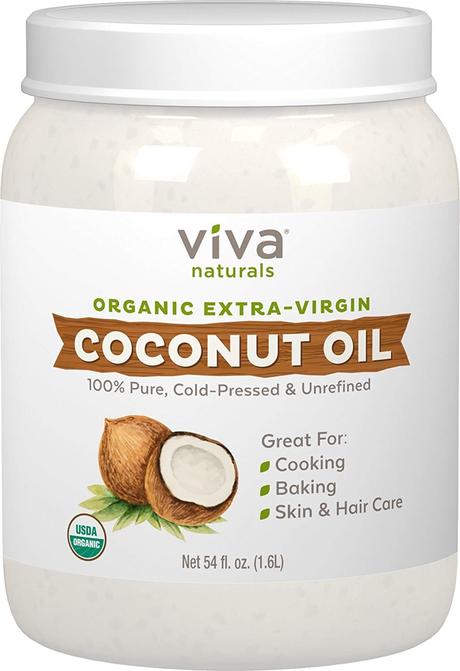
Viva Naturals Organic Extra Virgin Coconut Oil
Buy8. Listerine
Listerine is one of the best solutions to cure hot spots on dogs, as it does not have any alcohol that might burn the wound, the herbal oils in Listerine have antifungal and antibacterial properties that disinfect and dry out the hot spot.
Note: use the gold Listerine as the colored ones might have sugar in them.
Things you’ll need:
- Listerine ( 1 tablespoon )
- baby oil ( 1 tablespoon )
- water ( 1 tablespoon )
Pour one tablespoon each of Listerine, water, and baby oil into a spray bottle, shake the container to mix the ingredients very well, and spray the solution on the hot spot.
Use this remedy several times a day for one week; this spray can also be used to get rid of Mange in dogs.
9. Witch Hazel
Witch hazel has skin-soothing properties; it is also a powerful astringent that will dry out the wound and help it heal faster.
Put a few drops of witch hazel on a cotton ball and gently dab the cotton ball on your dog’s hot spot.
Let the witch hazel get absorbed into the skin, and repeat 2 or 3 times a day until the hot spot vanishes.
Best Overall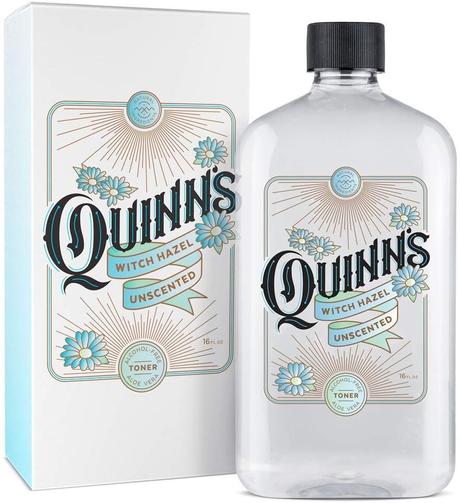
Quinn’s Alcohol Free Witch Hazel
Buy10. Benadryl
Benadryl is an antihistamine and anti-allergic agent, and it is an over-the-counter medicine that can be used to ease itching and skin irritation in dogs.
Give your pooch Benadryl orally after consulting your vet; the dosage should be 25 milligrams per 25 pounds of the dog’s body weight, only half of a 25-milligram dose for dogs wearing less than 15 pounds.
Best Overall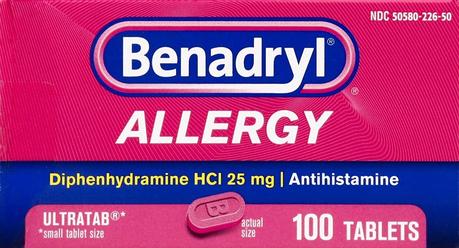
Benadryl Ultratabs Antihistamine Allergy Relief
BuyFlea bites and hot spots
Flea bites are the leading cause of Flea Allergy Dermatitis, which then results in dog hot spots.
Just one flea bite is capable of turning your dog’s life into a constant scratching nightmare.
Excessive scratching and licking lead to hot spots, which cause extreme discomfort for your pet.
Therefore, the best way to prevent hot spots on dogs is by adopting an effective flea control strategy.
In fleaondogs.com, we help dog owners to find the best flea treatments for dogs.
Our website contains various articles that help you and your fur friend to get rid of these annoying parasites.
Flea powder
Flea powder eliminates adult fleas, flea eggs, flea larvae, and ticks on contact.
(Read: Top 5 Best Flea Powders For Dogs)
Flea Shampoos
Flea shampoo is a unique medicated shampoo that can harmlessly wash your pet’s coat while destroying fleas and preventing re-infestation.
(Read: Top 5 Best Flea Shampoos For Dogs)
Flea pills
Flea pills are oral treatments that kill and prevent flea infestations in dogs.
(Read: Top 6 Effective Flea Pills For Dogs)
Flea combs
A Flea comb is a grooming tool pet owners use to brush through their pet’s fur. Unlike ordinary combs, the teeth of a flea comb are separated, which allows the comb to trap and extract fleas, flea eggs, and flea “dirt” from your pet’s coat.
(Read: Best 5 Flea Combs for dogs )
Flea collars
A flea collar is a tool used to defend dogs and cats from fleas and ticks.
(Read: Best 5 Flea Combs for dogs )
Electric Flea traps
Electric flea trap simulates the heat that a dog’s body produces to attract adult fleas, then exterminate them with a restraining tool or catch them on a sticky trap.
(Read: Top 3 Best most effective Electric Flea traps)
